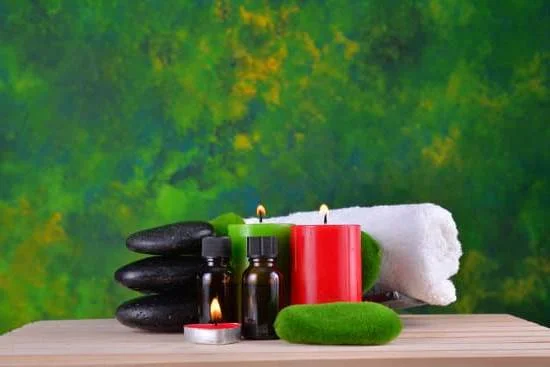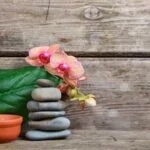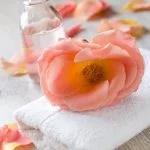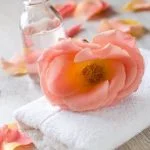Aromatherapy oils are gaining popularity as more people seek natural remedies for their well-being. From promoting relaxation to improving mood and relieving stress, these oils offer a range of potential benefits. In recent years, the trend of making DIY aromatherapy oils has emerged, allowing individuals to create personalized blends that suit their specific needs.
By making your own aromatherapy oils, you have complete control over the ingredients and can ensure they are of the highest quality. This allows you to tailor the potency and scent to your liking, providing a truly customized experience. Whether you want to address physical ailments or simply enhance your daily routine, learning the art of making your own aromatherapy oils opens up endless possibilities.
Understanding essential oils is a crucial first step in creating your personal blends. Each essential oil possesses distinct properties that have various effects on both physical and emotional well-being. By familiarizing yourself with different oils and their properties, you can craft blends that target specific concerns or achieve desired outcomes such as relaxation or focus.
In this article, we will delve into the basics of aromatherapy oils, exploring their benefits and how they can improve your well-being. We will also discuss how essential oils work and their diverse properties. Furthermore, we will guide you through gathering the necessary materials and equipment for creating homemade aromatherapy oils. So get ready to unlock the secrets of aromatic bliss as we embark on a journey into the world of aromatherapy oil creation.
Understanding Essential Oils and Their Properties
Essential oils are concentrated extracts that are derived from plants. These oils capture the natural aroma and beneficial properties of the plant, making them popular in aromatherapy. Each essential oil has its own unique set of properties which can affect physical and emotional well-being. When creating your own aromatherapy oils, it is important to understand these properties in order to choose the right oils for your blends.
To start, it’s helpful to have a basic understanding of different essential oils and their diverse properties. Some popular essential oils include lavender, peppermint, eucalyptus, and lemon. Lavender oil, for example, is known for its calming and relaxing effects. Peppermint oil has a refreshing scent and can help with headaches or digestion. Eucalyptus oil is often used for its respiratory benefits, while lemon oil can uplift mood and promote energy.
When choosing essential oils for your DIY blends, there are several factors to consider. It’s important to think about the desired effects you want to achieve and match them with the corresponding properties of the oils. Additionally, consider any personal preferences or sensitivities that you may have. Some essential oils may not be suitable for individuals with certain medical conditions or allergies.
To make it easier to understand which essential oil would be best suited for your needs, here is a list of some common essential oils along with their properties:
- Lavender: Calming, relaxing
- Peppermint: Refreshing, uplifting
- Eucalyptus: Respiratory support
- Lemon: Energizing, mood-enhancing
- Tea Tree: Antiseptic, antibacterial To create your own personalized blend of aromatherapy oils, you can mix different essential oils together based on their unique properties. For example, if you want a blend that promotes relaxation and improves sleep quality, combining lavender and chamomile may be a good choice. On the other hand, if you’re looking for an uplifting blend to enhance mood and focus, consider blending lemon and rosemary oils.
Remember to always start with small amounts of each oil and test the blend on a small area of skin before using it more widely. This will help ensure that you don’t have any adverse reactions or sensitivities to the oils. Keep in mind that essential oils are highly concentrated and should be used with caution. It’s best to follow recommended dilution ratios and usage guidelines to ensure safety.
Gathering the Necessary Materials and Equipment
Essential Items for Creating Homemade Aromatherapy Oils
Before you can start making your own aromatherapy oils, it’s important to gather the necessary materials and equipment. Here is a list of essential items you’ll need:
- Essential Oils: These are the key ingredients in aromatherapy oils. Choose high-quality, pure essential oils that suit your desired benefits and personal preferences. Common essential oils include lavender, peppermint, eucalyptus, lemon, and tea tree.
- Carrier Oils: Carrier oils are used to dilute essential oils and act as a base in aromatherapy blends. Opt for carrier oils such as sweet almond oil, jojoba oil, or coconut oil. Make sure to use cold-pressed, organic carrier oils for the best results.
- Storage Containers: You’ll need proper storage containers to store your homemade aromatherapy oils. Dark glass containers are ideal as they protect the oils from sunlight and heat. Amber glass bottles with a tight-fitting lid or dropper top are commonly used for storing essential oil blends.
- Measuring Tools: Accurate measurements are crucial when creating aromatherapy oil blends. Use graduated cylinders or pipettes for precise measurements of essential and carrier oils.
- Mixing Utensils: To properly blend your essential and carrier oils together, you’ll need mixing utensils such as glass stirring rods or stainless-steel spoons. Avoid using plastic utensils as they may react with the essential oils.
Tips for Sourcing Pure Essential Oils
When sourcing pure essential oils for your homemade blends, keep these tips in mind:
- Research Suppliers: Look for reputable suppliers that specialize in high-quality, pure essential oils. Check reviews and certifications to ensure their products are genuine and unadulterated.
- Organic Options: Consider choosing organic essential oils to minimize exposure to pesticides and chemicals. Look for labels indicating that the oils are certified organic.
- Test for Purity: Perform a purity test by placing a small drop of the essential oil on a piece of white paper. Pure essential oils should evaporate quickly, leaving no residue or stains behind.
The Importance of High-Quality Carrier Oils and Storage Containers
Using high-quality carrier oils and storage containers is vital for ensuring the longevity and effectiveness of your aromatherapy oils:
- Carrier Oil Selection: Opt for cold-pressed carrier oils that are natural, unrefined, and free from additives or artificial fragrances. Cold-pressed oils retain more beneficial properties.
- Storage Container Considerations: Amber glass bottles are perfect for storing aromatherapy oils as they protect against light damage. The dark color helps preserve the potency and therapeutic properties of the essential oils.
- Proper Sealing: Ensure that your storage containers have tight-fitting lids or dropper tops to prevent air exposure, which can lead to oxidation and degradation of the oils.
By gathering these materials and using high-quality carrier oils and storage containers, you can make sure that your homemade aromatherapy oils are potent, long-lasting, and safe to use.
Essential Oil Extraction Methods
Essential oils are highly concentrated plant extracts that are widely used in aromatherapy for their therapeutic properties. These oils can be extracted from various parts of plants, such as the flowers, leaves, or roots, and are known for their diverse range of scents and healing benefits. When it comes to creating your own aromatherapy oils, there are two main extraction methods: distillation and infusion.
Distillation
One of the most common methods for extracting essential oils is through distillation. This process involves using steam to separate the volatile compounds from the plant material. Distillation is primarily used for extracting oils from plants that have a high oil content, such as lavender or eucalyptus.
To distill essential oils at home, you will need a distillation apparatus consisting of a still or steam generator and a condenser. The plant material is placed in the still, and steam is passed through it to release the volatile compounds. The steam then enters the condenser where it cools down and forms liquid droplets that contain both water and essential oil. These droplets are collected and separated to obtain pure essential oil.
Infusion
Infusion is another method commonly used for extracting essential oils, especially from plant materials that do not have high oil content. This method involves soaking the plant material in a carrier oil or alcohol to extract its aromatic components over time.
To create an infused oil at home, you will need dried plant material of your choice (such as herbs or petals) and a carrier oil like jojoba or sweet almond oil. Place the dried plant material in a glass jar and cover it completely with the carrier oil. Seal the jar tightly and store it in a cool, dark place for several weeks or even months to allow the aromatic compounds to infuse into the carrier oil.
Both distillation and infusion methods have their advantages and limitations. Distillation allows for a more concentrated essential oil, but it requires specialized equipment and can be time-consuming. On the other hand, infusion is an easier and more accessible method for beginners, although the resulting oil may not be as potent as a distilled oil.
By understanding these extraction methods, you can choose the most suitable technique for your needs and start creating your own homemade aromatherapy oils with confidence.
Popular Essential Oil Blends and Their Uses
Aromatherapy oils have gained significant popularity in recent years due to their potential benefits for physical and emotional well-being. One of the advantages of using aromatherapy oils is the ability to create your own unique blends tailored to your specific needs. In this section, we will explore some popular essential oil blends and their uses, empowering you to start incorporating these wonderful oils into your daily life.
Relaxation Blend
Ingredients:
- 4 drops lavender essential oil.
- 2 drops chamomile essential oil.
- 2 drops bergamot essential oil.
This relaxation blend is perfect for unwinding after a long day or promoting a restful night’s sleep. Lavender is known for its calming properties, while chamomile helps to reduce stress and tension. Bergamot adds a touch of citrusy freshness that uplifts the spirits.
Energizing Blend
Ingredients:
- 3 drops peppermint essential oil.
- 2 drops rosemary essential oil.
- 2 drops lemon essential oil.
When you need a boost of energy and mental clarity, this blend is your go-to companion. Peppermint invigorates the senses, while rosemary supports focus and concentration. Lemon adds a bright and uplifting aroma that helps combat fatigue.
Immune Support Blend
Ingredients:
- 4 drops tea tree essential oil.
- 2 drops eucalyptus essential oil.
- 2 drops lemon essential oil.
To give your immune system a boost during times of seasonal threats, try this immune support blend. Tea tree has powerful antimicrobial properties, while eucalyptus helps clear the respiratory system. Lemon provides an uplifting scent while also offering immune support.
Using these blends is easy. Simply mix the specified number of drops together in a small amber bottle, then add them to your diffuser or dilute in a carrier oil for topical application. Remember to always follow proper dilution guidelines and perform a patch test before applying the oils to your skin.
Incorporating aromatherapy oils into your daily routines is an enjoyable way to enhance your well-being. Whether you use them in a diffuser, as part of a massage blend, or even in homemade beauty products and cleaning solutions, the possibilities are endless. Experiment with different blends and find what works best for you.
Safety Considerations and Precautions
When using aromatherapy oils, it is important to keep in mind certain safety considerations and take necessary precautions. While essential oils can provide numerous benefits, they are highly concentrated and have the potential to cause adverse effects if not used properly.
One of the main safety precautions when using aromatherapy oils is to ensure proper dilution. Essential oils should never be applied directly to the skin at full strength as they can cause skin irritation or sensitization. It is recommended to dilute essential oils with a carrier oil before applying them topically.
The general guideline for dilution is 3-5 drops of essential oil per teaspoon of carrier oil. However, some essential oils may require even higher dilution rates, so it is important to research each specific oil’s recommended usage rate.
Additionally, it is crucial to be aware of any potential sensitivities or allergic reactions that certain individuals may have towards specific essential oils. Some people may be more sensitive than others, so it is advisable to perform a patch test before using a new oil. Apply a small amount of diluted oil to a small area of skin and monitor for any adverse reactions over 24 hours.
Special caution should also be taken when using aromatherapy oils around children and pets. Certain essential oils can be toxic or irritating for them, so it is important to research which oils are safe for their use and ensure proper ventilation in the room where the oils are being diffused.
By following these safety considerations and taking necessary precautions, you can enjoy the benefits of aromatherapy oils while minimizing any potential risks or side effects.
| Safety Considerations | Precautions |
|---|---|
| Proper Dilution | Dilute essential oils with carrier oil before applying topically |
| Skin Sensitivities | Perform a patch test before using a new essential oil |
| Children and Pets | Research which oils are safe for their use and ensure proper ventilation |
Storing and Preserving Your Aromatherapy Oils
Proper storage is essential for maintaining the potency of your homemade aromatherapy oils. To ensure that your oils remain effective and long-lasting, it is important to follow some guidelines for storing and preserving them.
One key consideration is the choice of containers. Amber glass bottles are often recommended for storing essential oils because they help protect the oils from sunlight and UV rays, which can degrade their quality. The dark color of these bottles also helps prevent oxidation. Alternatively, you can use dark-colored containers made of materials such as aluminum or PET plastic.
Another important factor in preserving your aromatherapy oils is temperature control. Essential oils should be stored in a cool, dry place away from direct sunlight and heat sources, as exposure to high temperatures can cause the oils to deteriorate more quickly. It’s best to store them in a pantry or cupboard where the temperature remains relatively stable.
In addition to proper containers and storage conditions, maximizing the shelf life of your homemade oils can also be achieved by adhering to some basic practices. First and foremost, it is crucial to keep the lids tightly sealed on your containers when not in use to prevent air exposure. Exposure to air can lead to oxidation and degradation of the essential oils.
Lastly, it’s a good idea to label all your bottles with the date they were created and include a list of ingredients used. This will help you keep track of expiration dates and ensure you know what each bottle contains.
By following these storage and preservation guidelines, you can enjoy longer-lasting and effective aromatherapy oils that continue delivering their therapeutic benefits over time.
| Storage Considerations | Tips |
|---|---|
| Containers | Choose amber glass bottles or dark-colored containers |
| Temperature Control | Store oils in a cool, dry place away from direct sunlight and heat sources |
| Tightly Sealed Lids | Keep lids tightly sealed on containers to prevent air exposure |
| Date and Ingredient Labels | Label bottles with creation date and ingredients list for tracking purposes |
DIY Aromatherapy Oil Recipes for Beginners
Once you have gathered the necessary materials and equipment, it’s time to start creating your own aromatherapy oils. Whether you are looking to relieve stress, enhance your mood, or simply enjoy the calming effects of essential oils, there are plenty of beginner-friendly recipes to try. Here are a few simple yet effective blends to get you started:
1. Calming Lavender Blend:
- 4 drops of lavender essential oil.
- 2 drops of chamomile essential oil.
- 2 drops of bergamot essential oil.
This blend is perfect for promoting relaxation and easing anxiety. Mix the oils together in a small glass bottle and store in a cool, dark place.
2. Energizing Citrus Blend:
- 3 drops of lemon essential oil.
- 3 drops of orange essential oil.
- 2 drops of grapefruit essential oil.
Wake up your senses with this invigorating blend. Combine the oils and store in an amber glass bottle to preserve their potency.
3. Mood-Boosting Rose Blend:
- 5 drops of rose essential oil.
- 3 drops of ylang ylang essential oil.
Create a romantic and uplifting atmosphere with this beautiful blend. Mix the oils together and pour into a small roll-on bottle for easy application on pulse points.
Remember that these recipes can be customized according to personal preferences. Feel free to experiment with different combinations and adjust the number of drops based on desired strength. It’s also important to label each blend with its ingredients and date created.
As you become more comfortable with blending essential oils, don’t hesitate to explore new combinations or create your own unique recipes. The possibilities are endless when it comes to creating personalized aromatherapy oils that cater specifically to your needs.
By making your own aromatherapy oils, you have total control over the ingredients and can ensure they are pure and high-quality. Plus, it can be a fun and satisfying hobby that allows you to tap into your creativity. So why not embrace the art of aromatherapy oil creation and enjoy the numerous benefits they have to offer?
If you would like to learn more about essential oils or explore additional recipes, there are plenty of resources available online or at your local library. Whether you’re a beginner or seasoned enthusiast, the world of aromatherapy oils is waiting for you to dive in and discover its wonders.
Conclusion
In conclusion, making your own aromatherapy oils is a fulfilling and rewarding experience that allows you to tap into the numerous benefits of essential oils. Throughout this article, we have explored the basics of aromatherapy oils and their potential advantages. We have also delved into understanding essential oils and their properties, gathering the necessary materials and equipment, learning about different extraction methods, exploring popular oil blends, and discussing safety considerations.
The art of creating your own aromatherapy oils grants you the freedom to tailor your blends to meet your specific needs and preferences. Whether you are seeking stress relief, mood enhancement, or relief from common ailments, there are countless recipes available to help guide you in your oil-making journey. The versatility of essential oils allows you to incorporate them seamlessly into your daily routine through diffusers, massage treatments, bath rituals, or as natural alternatives for household products.
It is important to remember that proper storage and preservation are crucial for maintaining the potency of your homemade oils. By using amber glass bottles or dark containers and following guidelines for maximizing shelf life, you can ensure that your creations remain effective for a long time.

Are you looking for a natural way to improve your health and wellbeing?
If so, aromatherapy may be the answer for you.





